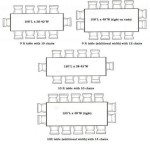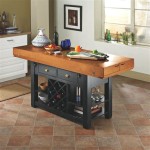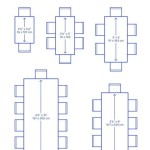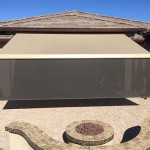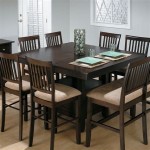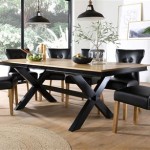Mid Century Modern Pedestal Tables: A Study in Form and Function
Mid Century Modern (MCM) furniture, flourishing roughly from the mid-1930s to the mid-1960s, continues to captivate designers and homeowners alike. Characterized by clean lines, organic shapes, and a focus on functionality, MCM pieces readily integrated into everyday life. Among the most iconic examples of this design movement is the pedestal table. This table style, distinguished by a central support in lieu of traditional legs, embodies the principles of MCM design, offering a blend of aesthetic appeal and practical utility.
The allure of the MCM pedestal table lies in its ability to create a visually open and spacious environment. The absence of obstructive legs around the perimeter allows for increased legroom and seating flexibility. This design feature makes it particularly well-suited for smaller spaces, where maximizing floor space is a priority. Moreover, the pedestal base provides a visual focal point, adding a touch of understated elegance to any room. The design ethos of simplicity and efficiency allows the table to blend with a wide array of design aesthetics, from minimalist to eclectic.
The Evolution of the Pedestal Base
The pedestal table did not originate with the Mid Century Modern movement. Historical precedents can be found in earlier furniture designs, including classical and Victorian styles. However, MCM designers reimagined the pedestal base, moving away from ornate detailing and embracing streamlined, geometric forms. The traditional heavy, carved pedestals were replaced with lighter, more sculptural designs, often crafted from materials like wood, metal, or molded fiberglass.
One notable innovation was the use of new materials and manufacturing techniques. Plywood, a relatively inexpensive and readily available material, became a staple in MCM furniture production. Designers experimented with bending and shaping plywood to create innovative pedestal bases that were both structurally sound and visually appealing. Similarly, the introduction of molded fiberglass allowed for the creation of sinuous, organic curves, further expanding the design possibilities for pedestal tables. Metal, often powder-coated or chrome-plated, was also a popular choice, offering durability and a sleek, modern aesthetic.
The shape of the pedestal base also underwent a transformation. While some designs retained the traditional cylindrical or square pedestal, others incorporated more abstract and sculptural forms. Tulip shapes, flared bases, and interlocking geometric elements became common, adding a touch of artistic flair to the functional design. These variations demonstrated the MCM designer’s commitment to pushing the boundaries of traditional furniture making while adhering to the principles of form following function.
Materials and Construction Techniques
The materials used in the construction of MCM pedestal tables played a crucial role in defining their aesthetic and functional characteristics. Wood, particularly teak, walnut, and oak, was a favored material for both the tabletop and the pedestal base. These hardwoods were prized for their rich color, distinctive grain patterns, and durability. The emphasis was on showcasing the natural beauty of the wood, often with a clear finish that allowed the grain to shine through.
Plywood, as mentioned earlier, was another important material. Its versatility allowed designers to create complex curves and shapes that would have been difficult or impossible to achieve with solid wood. Plywood was often used in conjunction with solid wood, providing structural support while minimizing cost and weight. Laminates, such as Formica, were also employed as a durable and easy-to-clean surface for tabletops. These synthetic materials offered a wide range of colors and patterns, providing designers with greater creative freedom.
Metal, typically steel or aluminum, was frequently used for the pedestal base, offering strength and stability. Chrome plating was a popular finish, providing a sleek, reflective surface that complemented the clean lines of the design. Powder coating, a more durable alternative to paint, was also used to add color and texture to metal bases. The construction techniques employed in MCM pedestal table production emphasized both efficiency and quality. Factory production methods were refined to allow for mass production of furniture while maintaining a high level of craftsmanship. Joints were often reinforced with screws, dowels, or metal brackets to ensure structural integrity.
Design Influences and Key Designers
The design of MCM pedestal tables was influenced by a variety of sources, including the Bauhaus movement, Scandinavian design, and the burgeoning art of industrial design. The Bauhaus emphasis on functionalism and simplicity resonated strongly with MCM designers, who sought to create furniture that was both aesthetically pleasing and practical. Scandinavian design, with its focus on natural materials and organic forms, also had a significant impact. The clean lines and understated elegance of Scandinavian furniture were readily adopted by MCM designers.
Several key designers contributed significantly to the development of the MCM pedestal table. Eero Saarinen, a Finnish-American architect and designer, is perhaps best known for his "Tulip" table, designed for Knoll International in 1956. This iconic table features a single, trumpet-shaped pedestal base made from cast aluminum, creating a clean and seamless look. The Tulip table exemplifies the MCM ideal of merging form and function into a unified whole.
Charles and Ray Eames, another influential design duo, also created a variety of pedestal tables using molded plywood and other innovative materials. Their designs were characterized by their playful forms and their emphasis on comfort and usability. George Nelson, another prominent MCM designer, created a range of pedestal tables that incorporated both wood and metal elements. His designs often featured geometric shapes and bold colors, reflecting the optimism and dynamism of the era. These designers, along with many others, helped to define the aesthetic of the MCM pedestal table and solidify its place in design history.
The enduring appeal of the Mid Century Modern pedestal table lies in its timeless design and its ability to adapt to a variety of interior styles. Whether used as a dining table, a side table, or a coffee table, the MCM pedestal table adds a touch of elegance and sophistication to any room. Its clean lines, organic shapes, and functional design make it a versatile and enduring piece of furniture that continues to be appreciated by designers and homeowners around the world.

Armen Living Cirque 54 In Walnut Wood Mid Century Modern Pedestal Round Dining Table With Epoxy Black Metal Base Lccqdiwa The Home

Round Dining Table Handmade In Solid Walnut Cherry Mahogany Or Oak Wood Mid Century Modern Pedestal Base Etsy

Oval Dining Table Midcentury Modern Pedestal Wood Base Walnut Tables Etsy

Modway Amuse 40 Round Mid Century Modern Pedestal Dining Table In Gold Walnut Ebay

Midcentury Modern Table Oval Dining Loewen Design Studios

Modway Lippa Mid Century Modern 78 Oval Dining Table In Black White Ebay

Acme Dn02915 5pc 5 Pc Keiki Walnut Finish Wood Mid Century Modern Style 48 Round Dining Table Set

Mid Century Modern Stow Away Draw Leaf Leg Table

Fm3211wn T 5pc 5 Pc Ebikon Walnut Finish Wood Oval Mid Century Modern Dining Table Set

Malone Mid Century Modern Dark Walnut Dining Table

